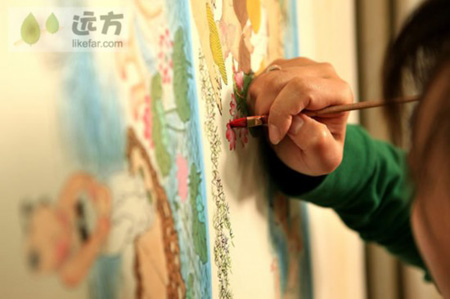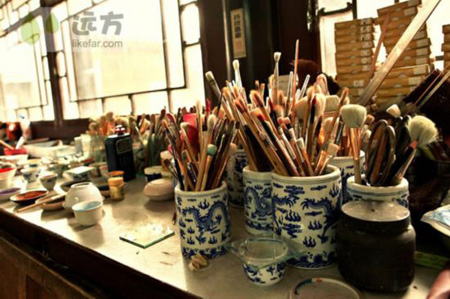Before we started, my mind is preoccupied with the classic image of flourishing poplar and willow, black tile and white walls veiled in drizzling rain, just like a Chinese water-and-ink painting, as the name, Yangliuqing, implies.
As a historic town with thousands of years of culture and legacy, Yangliuqing used to bloom with various folk arts and crafts. It's famous for Yangliuqing painting of the Lunar New Year, kites, paper cutting, as well as brick and stone sculptures.
There were three great treasures at Yangliuqing, the theater, the Memorial Archway and Wenchangge Pavilion. Nowadays, only Wenchangge still exists.
Additionally, ancient pagodas and temples, along with relics are worth visiting.
It is said that where there are Chinese people, there are Chinese Lunar New Year paintings, and so is Yangliuqing. The famous folk wood carving painting was first born in the 17th century, when local residents reposed their hopes for a better life on knives, wood plates and painting in the turbulent society. The early paintings gradually formed their own characters with an auspicious festive tone.
At the town, some stores sell these paintings to just a few customers, showing that tradition is not essential for modern life. The golden age of Yangliuqing has gone, only the paintings depicting those glorious times still shine as it was.
Taking a try


Yangqiuqing Painting House
Located at the west of Shijiadayuan Courtyard, this place offers you an opportunity to share the cheer of printing the painting yourself. Take your work home to welcome the upcoming Lunar New Year is surely inviting.
Shijiadayuan Courtyard
Built in the late Qing dynasty (1644-1912), the building is a fine blend of East and West architectural style, holding the largest civilian-house-transformed theater at the Courtyard, staging folk operas daily. Besides, the Tianjin Folk Custom Museum is worth visiting, where you can see kites, paper cutting, and learn about local wedding customs.
Wenchangge Pavilion
Sitting at the south bank of the Yangliuqing Canal, Wenchangge boasts the best-preserved architecture of the Ming Dynasty (1368-1644). The six-angle pavilion is renowned for its refined structure and long history.
Getting there:
By train: It takes only 45 minutes from Beijing South Railway Station by taking the high speed railway.
By bus: There are shuttle buses at both Bawangfen and Zhaogongkou, a long-distance bus station.
Editor:JinXin
